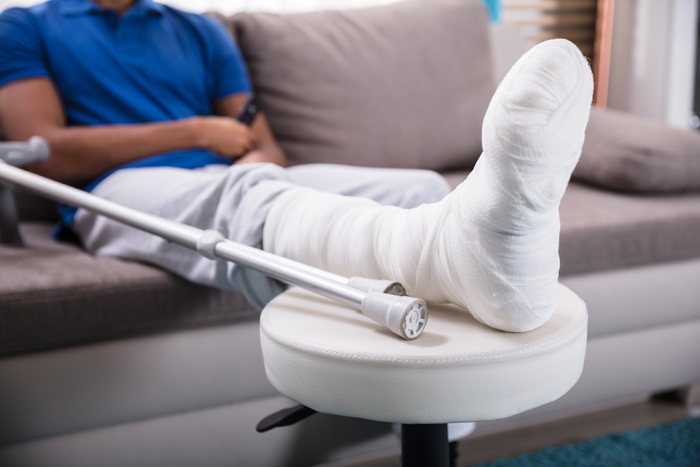Trauma and Fracture Treatment in Kondapur, Hyderabad
A bone fracture is a medical ailment characterized by the cracking or breaking of a bone. It’s a break in the bone’s continuity. While many fractures are caused by stress or a high force impact, they can also be caused by medical diseases like osteoporosis, in which the bones become weak.
What are Trauma and Fracture?
The term “fracture” connotes a broken bone. A bone can be totally or partially fractured, and it is caused by trauma such as a car accident, a fall, or while playing sports. Osteoporosis causes bone thinning in older adults, which can lead the bone to shatter easily. Stress fractures in sports are frequently caused by overuse injuries.

What Are the Symptoms of Trauma and Fracture?
A fracture or a post-traumatic orthopaedic problem can cause a variety of symptoms, including;
- A deformed joint or limb, sometimes with damaged skin or exposed bone (compound or open fracture)
- Restricted movement
- Fever
- Tenderness
- Swelling
- Numbness
- Bruising
- Pain
What Are the Causes of Trauma and Fracture?
Fractures can occur due to various reasons;
- Trauma – Fractures can occur due to accidents, bad falls, or while playing contact sports.
- Overuse – Stress fractures can occur due to repetitive motion, which can tire the muscles and put more force on the bones. These types of fractures commonly occur in athletes.
- Osteoporosis – Bones become weak and more likely to break due to this condition.
When to See a Doctor?
You should immediately consult a doctor if you have a fracture wherein the bone is sticking out through your skin or if your limb is visibly mangled or misaligned.
Request an appointment at Apollo Spectra Hospitals, Kondapur
Call 1860-500-2244 to book an appointment
What are the Risk Factors of Trauma and Fracture?
Certain risk factors can increase the chances of a fracture, including;
- Age – Fractures are more common in people above the age of 50.
- Gender – Women are more prone to fractures than men.
- Alcohol
- Smoking
- Rheumatoid arthritis
- Certain chronic conditions
- Steroids
- Diabetes
- Previous fractures
How are Trauma and Fracture Diagnosed?
A physical examination and imaging tests at Apollo Kondapur are usually used to diagnose fractures and post-traumatic orthopaedic disorders. X-rays are commonly used to diagnose fractures. Other methods of imaging may be utilized to make a diagnosis, depending on the degree and location of the break or post-traumatic injury, as well as the extent of damage to surrounding tissue, including;
- CT scan
- MRI
- Arthrograms
Additional diagnostic tests may be used to identify bone infections or other problems.
How can We Treat Trauma and Fracture?
There are various treatment options for trauma and fractures;
- Nonsurgical – Casting and traction are forms of non-operative therapy.
- Casting – Any fracture that is shortened, displaced, or angulated requires closed reduction or casting. To immobilize the limb, casts or splints made of fibreglass or plaster of Paris are used.
- Traction – The traction method is used to treat fractures and dislocations that are not treatable with casting. Traction can be done in two ways – skin traction and skeleton traction.
- Surgical – Surgical treatment options for trauma and fractures include –
- Open reduction and internal fixation (ORIF) – This is a surgical method that involves adequately exposing the fracture site and reducing the fracture. Screws, intramedullary nails, plates, or Kirschner wires may be used for internal fixation.
- External fixation – External fixation is a method of fracture stabilization that takes place outside of the fracture site. It aids in the maintenance of bone length and alignment without the use of casting. It can be performed in case of open fractures, pelvic fractures, fractures with bony deficits, fractures with infections, soft tissue injuries, burns, unstable fractures, comminuted fractures, and limb-lengthening procedures.
How Can We Prevent Trauma and Fracture?
Fractures can be avoided by staying fit, eating the correct minerals and vitamins, and avoiding falls. Fractures may take months to heal, however, most patients recover completely. With proper care and rehabilitation, most people can return to their daily lives.
Fractures can be of various types –
- Simple fractures – In this type of fracture, the broken pieces of the bone are stable and well-aligned.
- Unstable fractures – In this type of fracture, the broken pieces of the bone are displaced and misaligned.
- Compound fractures – Compound fractures are those in which the shattered bones break through the skin. Immediate medical attention is required for compound fractures and it is more prone to getting infected.
- Greenstick fractures – This is a rare type of fracture in children that involves the bending of one side of the bone without a break.
It varies from person to person and depends on the severity of the fracture. Also, a fracture takes more time to heal with old age. Generally, fractures can heal within 6 to 8 weeks.
Symptoms
Our Top Specialities
NOTICE BOARD
CONTACT US
CONTACT US
 Book Appointment
Book Appointment


.svg)
.svg)
.svg)
.svg)








